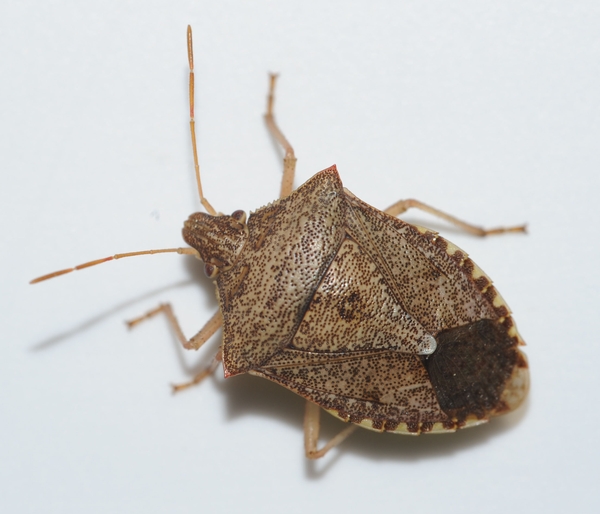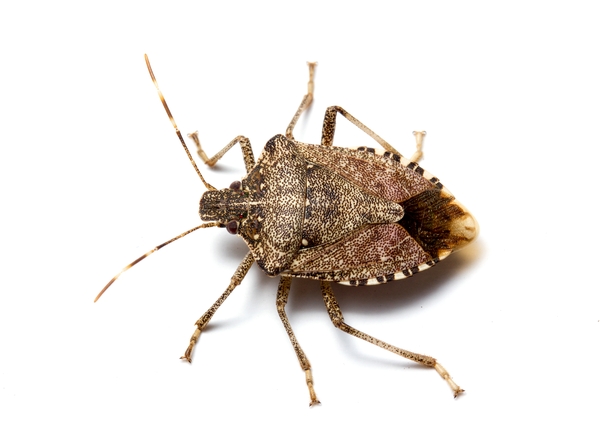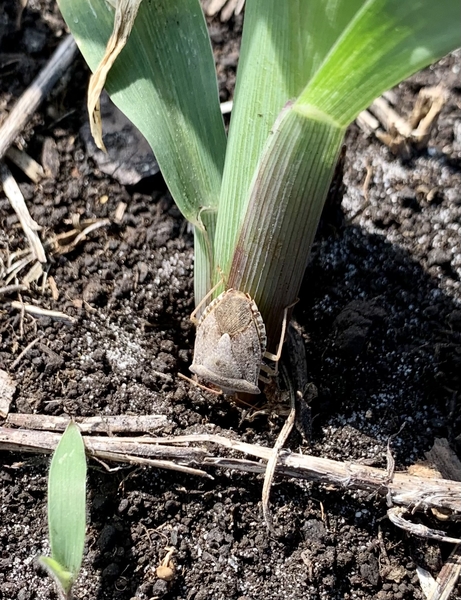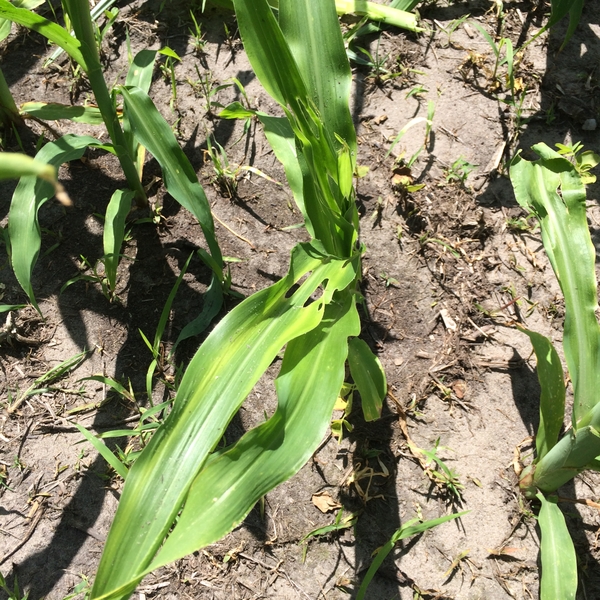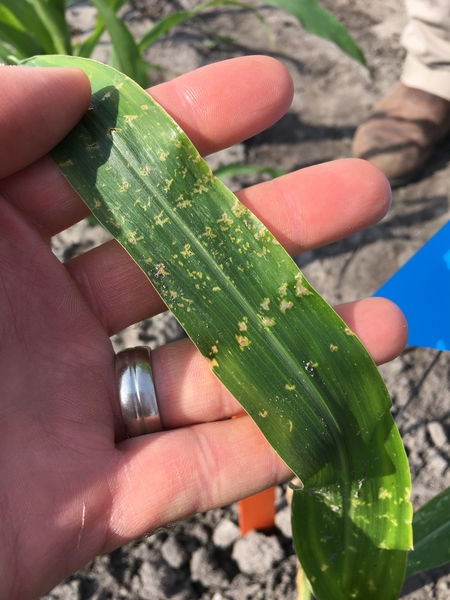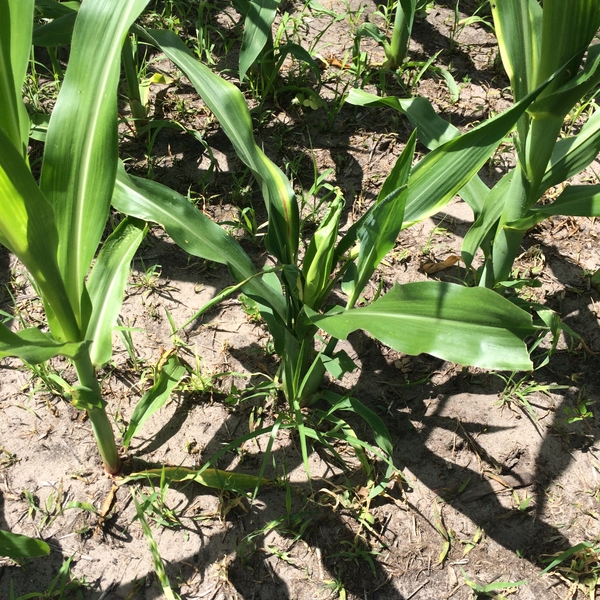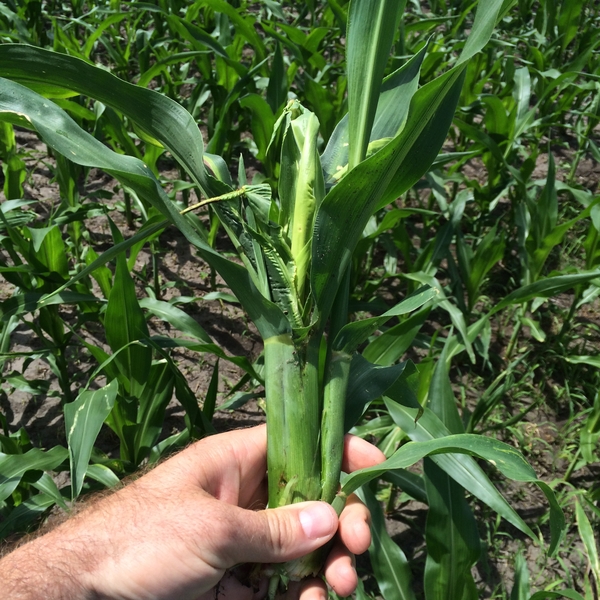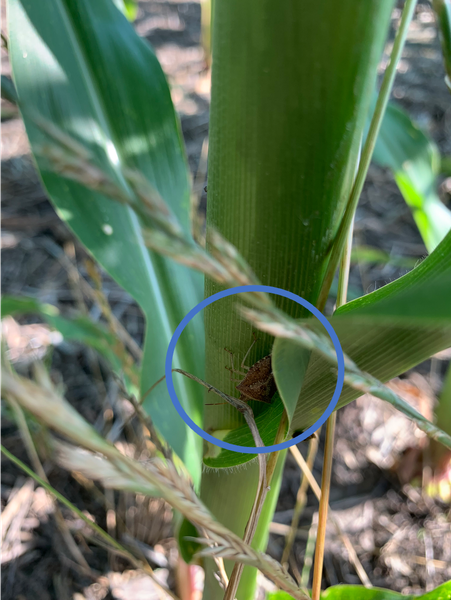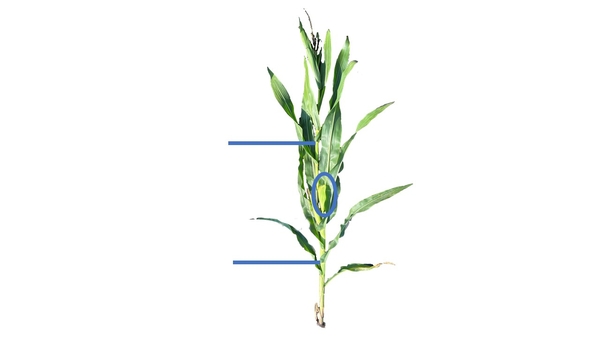Stink Bug Scouting Guide for Field Corn in the Southeastern US
en Español / em Português
El inglés es el idioma de control de esta página. En la medida en que haya algún conflicto entre la traducción al inglés y la traducción, el inglés prevalece.
Al hacer clic en el enlace de traducción se activa un servicio de traducción gratuito para convertir la página al español. Al igual que con cualquier traducción por Internet, la conversión no es sensible al contexto y puede que no traduzca el texto en su significado original. NC State Extension no garantiza la exactitud del texto traducido. Por favor, tenga en cuenta que algunas aplicaciones y/o servicios pueden no funcionar como se espera cuando se traducen.
Português
Inglês é o idioma de controle desta página. Na medida que haja algum conflito entre o texto original em Inglês e a tradução, o Inglês prevalece.
Ao clicar no link de tradução, um serviço gratuito de tradução será ativado para converter a página para o Português. Como em qualquer tradução pela internet, a conversão não é sensivel ao contexto e pode não ocorrer a tradução para o significado orginal. O serviço de Extensão da Carolina do Norte (NC State Extension) não garante a exatidão do texto traduzido. Por favor, observe que algumas funções ou serviços podem não funcionar como esperado após a tradução.
English
English is the controlling language of this page. To the extent there is any conflict between the English text and the translation, English controls.
Clicking on the translation link activates a free translation service to convert the page to Spanish. As with any Internet translation, the conversion is not context-sensitive and may not translate the text to its original meaning. NC State Extension does not guarantee the accuracy of the translated text. Please note that some applications and/or services may not function as expected when translated.
Collapse ▲Stink bugs are the top insect pest of corn in the southeastern US. Stink bugs follow a predictable pattern of colonization in corn, typically arriving during the late-vegetative stages and reaching their highest population around the tasseling stage. However, even though this pattern is somewhat predictable, it's not realistic to efficiently control stink bugs using fixed calendar-based insecticide applications or at the entire farm level.
This is because the maturity of corn varies across the farm due to differences in hybrid types and planting dates. Additionally, stink bug infestations are not evenly spread, as they move into corn from neighboring areas with both non-crop and crop hosts in the surrounding landscape. Infestation levels can, therefore, vary considerably among fields, even on the same farm. Furthermore, early-season damage to corn seedlings can also occur, although this is less common than damage later in the season. As a result, the most effective way to manage stink bugs in corn is to regularly inspect individual fields and apply treatments when the pest population reaches the economic threshold within each specific field on the farm.
The most common stink bugs infesting corn in the southeastern US are brown stink bug, Euschistus servus and southern green stink bug, Nezara viridula. Brown marmorated stink bug, Halyomorpha halys, will also infest corn, but it is not common in the Coastal Plain, where most of the field corn is grown. Brown marmorated stink bug has different preferences and infestation patterns than other stink bugs. Green stink bug, Chinavia hilare, can also infest corn, but it is not as common. This scouting guide is focused on the most common stink bugs found in the southeastern US, namely brown stink bug, southern green stink bug, and green stink bug.
Seedling Corn
Stink bugs can cause significant damage to young corn plants. Most seedlings are protected from light to moderate levels of stink bug infestation because all field corn seeds are sold with an insecticidal seed treatment that provides a base level of control. However, heavy stink bug populations or environmental conditions that interfere with plant growth or seed treatment uptake can overwhelm the seedling, especially when coupled with lower rates of insecticidal seed treatment.
Stink bug damage to seedlings can range from mild stunting or the development of additional tillers, to the most severe outcome, which is the death of the seedling. The extent of the damage depends on both the growth stage of the plant and how long the stink bugs feed on it. Generally, when stink bugs feed on the corn plant at an early stage of growth and for an extended period, the damage tends to be more severe.
For instance, in a 2019 trial, stink bugs were enclosed in cages and placed on corn plants at the V2 growth stage. When just one stink bug per plant fed on a single plant for a week, there was an average yield loss of 5.9 bushels per acre.
Adult stink bugs that feed on seedling corn during the spring are from the generation produced the previous fall and that survived the winter. They feed with their head into the soil, attempting to access the growing point that is under the soil until V5. Because of this, scouting should be directed to the base of the plant on the stalk beneath the lowest leaf. Finding stink bugs on seedling corn can be particularly challenging in fields with heavy crop residue.
Stink bugs tend to be more prevalent near field edges. While they can move great distances (we measured one adult brown stink bug that flew nearly 10 miles in 22 hours), most adults do not move far into the cornfield to begin feeding. Therefore, expect to find more stink bugs near the field edge.
To determine the need to use an insecticide, sampling should be conducted on a regular basis to determine if infestations exceed or fall below an economic threshold. These thresholds are based on the number of stink bugs per 100 plants and change during the growing season in three distinct sampling periods: 1) V1 to V6, 2) V14 to VT, and 3) R1 to R4. To use the threshold prior to VT, it is critical to split stalks to determine the growth stage. This is because the lower leaves deteriorate in older plants, and finding the lowest leaf to begin counting is difficult. Consult “staging older plants” for a description of how to do this.
These thresholds are based on sequential sampling. Once the scout reaches the minimum number of stink bugs required in the “treat” category, the scout can stop sampling and request that the field be treated.
To get a representative estimate of stink bug counts for a given field, sampling should be conducted at several locations across a field. The number of locations needed will vary depending on the size of a field, as stink bugs can be highly patchy across a field. Because stink bugs can be more abundant along the edge of fields, sampling should always include sampling at more than 50 ft into fields, in addition to sampling closer to the edge. However, all edges should be sampled. The goal is to not underestimate or overestimate stink bug infestations to make a correct decision whether or not to make a management intervention.
In addition to the previously mentioned signs of stink bug damage, such as seedling death, stunting, and tillering, there are other indicators of their injury on corn plants. These include the presence of transverse holes through the leaves, blotching, and streaks that indicate nutrient deficiency. When stink bugs feed, they use their beak (stylet) like a hypodermic needle and release enzymes externally to aid in digesting plant material. As a result, some experts have suggested that stink bug feeding may leave a distinctive yellow halo around the edges of the holes in the leaves.
However, it's important to note that the southern corn billbug can also feed on young corn plants, causing similar transverse holes in leaves with a yellow halo around the margins. Distinguishing between stink bug and billbug injury can be challenging, but billbug damage often tends to be more severe. Furthermore, during late July, one method to differentiate them is to split the corn stalks and check for billbug larvae completing their development in the crown just below the soil surface.
Late-Vegetative Stage Corn
The most prevalent damage caused by stink bugs in field corn in the southeastern US occurs when stink bugs feed right before the tasseling stage. During this critical period, the plant transports nutrients to the area where the primary ear of the corn plant begins to take shape. Unfortunately, stink bugs intercept this nutrient flow when they feed on the developing ear. While feeding on the ear, stink bugs can kill undifferentiated cells. When the cells surrounding the dead ones begin to divide, it can lead to deformities in the ear, resulting in damaged or misshapen corn ears with missing kernels.
When stink bugs begin to feed on the developing primary ear of corn, they tend to gather on the stalk in the area where this ear is taking shape. This behavior offers an opportunity for scouts to be more efficient in their monitoring efforts, as they can focus on inspecting the part of the plant where stink bugs are most likely to congregate.
Determining the exact timing of corn tasseling based solely on leaf count can be challenging. The number of leaves a corn plant produces can vary depending on the hybrid, and lower leaves may naturally senesce and drop off. Therefore, effective scouting may require scouts to split the crown of the plant and count the internodes to accurately stage the corn.
Alternatively, a more practical approach is to begin scouting when corn plants start to exhibit rapid and significant vertical growth. This can serve as a reliable indicator of the approaching tasseling stage and simplify the scouting process, making it more effective. Scouts should carefully pull back leaves until they identify the developing primary ear on the corn plant. Each node will have a primordial ear bud, but the primary ear will be noticeably larger than all the others. This process should be repeated on multiple plants until a reliable search pattern is established, allowing scouts to identify the primary ear without having to count individual ears on every plant. This systematic approach streamlines the scouting process and ensures accurate assessment.
Prior to tasseling, scouts should focus on counting all stink bugs (both adults and immatures) on the stalk from the first leaf above and the first leaf below the primary ear. This includes the stalk both above the first leaf above the primary ear and the stalk below the first leaf below the primary ear (see diagram).
As previously mentioned, stink bugs tend to be patchy pests, often clustering on specific plants or in patches within a field. Furthermore, they tend to be more prevalent in field edges. Therefore, if it can be confirmed that there are few to no stink bugs at all the field edges, there may be no need to sample the interior of the field for stink bug presence. However, all edges should be sampled. This strategy can save time and resources in scouting and monitoring efforts.
Treatment decisions are generally made on the field level. To determine whether treatment is necessary, you should tally the total number of stink bugs found on all plants and then calculate the average to determine if it exceeds the established threshold. Even if multiple stink bugs are found on a single plant, each one should be counted separately. In other words, all individual stink bugs, regardless of whether they are on the same plant or not, should be taken into account when assessing the overall population and deciding on the need for treatment.
Stink bugs are cryptic and will hide from scouts (see photo). Therefore, scouts should try to minimize movement and should move leaves in the scouting target zone to reveal any stink bugs that may be feeding out of sight.
Reproductive-Stage Corn
When corn is pollinating (R1) or blister stage (R2), stink bugs can cause kernels to abort, meaning these kernels will not develop properly, thus potentially reducing yield. Further stink bug feeding during the blister stage (R2) can cause kernel discoloration or direct yield loss due to reduced grain filling. In addition, stink bugs have the potential to transmit fungal pathogens that produce mycotoxins. This can lower the quality of the grain, making it less suitable for consumption or other purposes.
Scouting procedures for reproductive-stage corn are similar to those for vegetative-stage corn. However, scouts need to expand the search area on each plant. From R1-R2, scouts should focus on counting all stink bugs (both adults and immatures) on the stalk from the first leaf above and the second leaf below the primary ear. This includes the stalk both above the first leaf above the primary ear and the stalk below the second leaf below the primary ear (see diagram).
Once corn reaches the R3 stage, which is the milk stage of development, stink bugs generally become less of a concern in the majority of fields. This is because stink bugs tend to leave the field as corn plants progress into the reproductive stages of their growth. Additionally, at this stage, the corn plant has advanced to a point where it is less susceptible to stink bug damage, and the impact of stink bugs on yield becomes less significant. It would require a notably higher population of stink bugs to cause a noticeable decrease in yield compared to earlier growth stages. Therefore, while continued monitoring for stink bugs is advisable, the risk and severity of stink bug damage to corn typically decrease as the crop progresses beyond the early reproductive stages.



